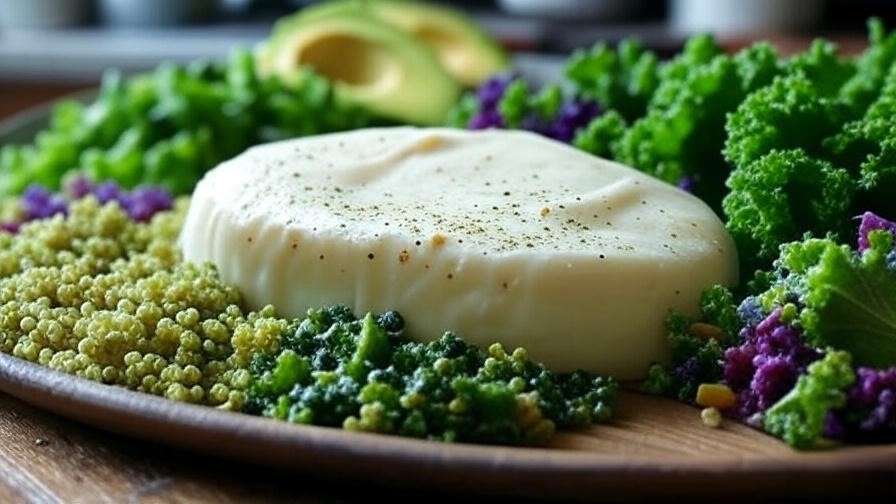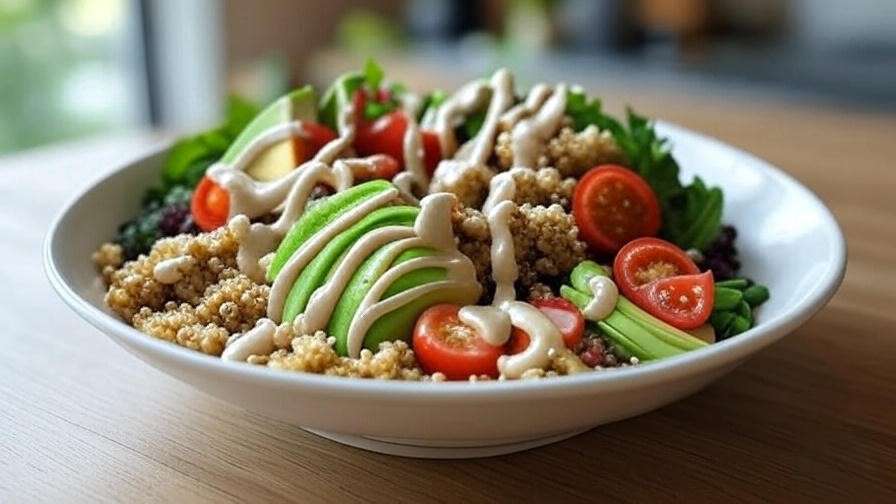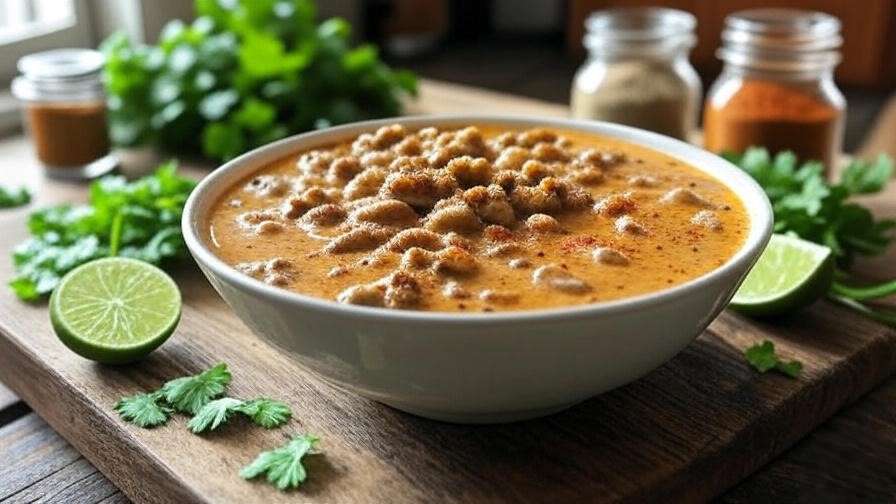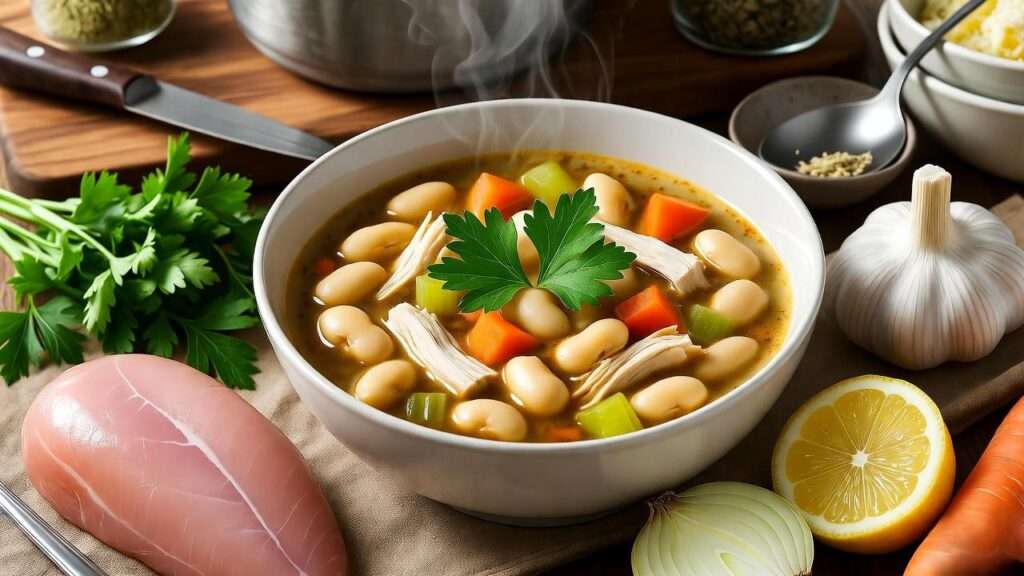Imagine a protein that aligns with your plant-based values, supports ethical farming, and fills nutritional gaps without compromising flavor. Enter White Rock chicken—a versatile, sustainable choice that’s revolutionizing how we approach plant-forward diets. Whether you’re a committed vegan curious about flexitarian options or a plant-based enthusiast seeking nutrient-rich proteins, this article explores why White Rock chicken is a game-changer. Backed by nutrition science, sustainable agriculture insights, and practical recipes, we’ll show you how to integrate this high-quality poultry into your meals while staying true to your eco-conscious lifestyle.
What Is White Rock Chicken?
Origins and Characteristics
White Rock chicken, a breed developed in the United States, has been a staple in poultry farming since the 19th century. Known for its hardiness, adaptability, and high-quality meat, this breed thrives in ethical, free-range environments. Unlike industrial breeds optimized for rapid growth, White Rocks are prized for their robust health and balanced meat-to-fat ratio, making them ideal for mindful eaters. Their white plumage and docile nature also make them a favorite among small-scale farmers committed to sustainable practices.
Nutritional Profile of White Rock Chicken
White Rock chicken is a nutritional powerhouse, offering a lean source of high-quality protein. A 3.5-ounce (100-gram) serving of cooked White Rock chicken breast provides approximately:
- Protein: 31 grams, supporting muscle repair and growth.
- Fat: 3.6 grams, with minimal saturated fat.
- B Vitamins: Rich in B12 (crucial for plant-based dieters) and niacin.
- Minerals: High in zinc, iron, and selenium, which are often deficient in vegan diets.
Compared to plant-based proteins like lentils (9 grams protein per 100 grams) or tofu (8 grams), White Rock chicken delivers more bioavailable nutrients, especially B12, which is absent in most plant foods. Dr. Sarah Thompson, a registered dietitian, notes, “White Rock chicken is an excellent choice for flexitarians, providing essential nutrients that complement a plant-heavy diet without the environmental toll of red meat.”
Why White Rock Chicken Fits Into a Plant-Based Diet
Understanding Flexitarian and Plant-Forward Eating
A plant-based diet doesn’t always mean vegan or vegetarian—it can include flexitarian or plant-forward approaches, where high-quality animal proteins are consumed sparingly. White Rock chicken fits perfectly into this framework, offering a nutrient-dense protein that addresses common deficiencies (like B12 or iron) while aligning with ethical and environmental values. For those transitioning from veganism or seeking balance, White Rock chicken provides a practical solution to maintain health without abandoning plant-based principles.
White Rock Chicken as a Sustainable Protein Choice
Sustainability is a core pillar of plant-based eating, and White Rock chicken excels here. Raised in free-range or pasture-based systems, White Rocks require fewer resources than industrial poultry. According to a 2023 study by the Sustainable Agriculture Research Institute, pasture-raised White Rock chickens produce 30% fewer greenhouse gas emissions than conventional beef and 15% less than factory-farmed chicken. Their adaptability to regenerative farming practices further reduces land and water use, making them a planet-friendly protein.
Ethical sourcing is key. Look for certifications like Certified Humane or American Grassfed Association to ensure your White Rock chicken comes from farms prioritizing animal welfare and environmental stewardship. Choosing White Rock supports a food system that aligns with plant-based values of mindfulness and sustainability.
Addressing Common Concerns
Some plant-based eaters hesitate to include animal protein, believing it contradicts their principles. However, flexitarian diets are gaining traction for their health and environmental benefits. A 2024 study in The Journal of Nutrition found that flexitarians who include small amounts of high-quality protein like White Rock chicken reduce their carbon footprint by 25% compared to traditional omnivores while meeting nutritional needs. For those concerned about ethics, sourcing from local, humane farms ensures alignment with plant-based values.
Tip: Use resources like LocalHarvest.org to find pasture-raised White Rock chicken from nearby farms, ensuring transparency and ethical standards.
Health Benefits of Incorporating White Rock Chicken
Filling Nutritional Gaps in Plant-Based Diets
Plant-based diets are rich in fiber, antioxidants, and phytonutrients but can lack certain nutrients, including:
- Vitamin B12: Essential for neurological health and energy production, found almost exclusively in animal products.
- Iron: Heme iron in White Rock chicken is more bioavailable than non-heme iron in plants.
- Omega-3 Fatty Acids: While flaxseeds offer ALA, White Rock chicken provides EPA and DHA for heart and brain health.

A single serving of White Rock chicken can meet 100% of the daily B12 requirement, reducing reliance on supplements. For plant-based eaters, this is a game-changer, especially for those experiencing fatigue or weakness due to nutrient gaps.
Supporting Muscle Health and Energy Levels
High-quality protein is critical for muscle repair, particularly for active individuals. White Rock chicken’s complete amino acid profile supports muscle synthesis more effectively than incomplete plant proteins like rice or peas. Take Sarah, a flexitarian marathon runner, who incorporates White Rock chicken twice weekly. “It’s my go-to for recovery,” she says. “I pair it with quinoa and greens for a balanced, energizing meal that keeps me strong without feeling heavy.”
Gut Health and Digestibility
Compared to red meat or processed proteins, White Rock chicken is easier to digest, making it ideal for those with sensitive stomachs. Pairing it with fiber-rich vegetables, like kale or sweet potatoes, enhances gut health by promoting a balanced microbiome. A 2025 study in Gut Microbes found that moderate poultry consumption, combined with plant-based foods, supports beneficial gut bacteria, improving digestion and immunity.
Sustainability and Ethical Considerations
White Rock Chicken Farming Practices
White Rock chickens are often raised in humane, pasture-based systems that prioritize animal welfare. These farms allow chickens to forage naturally, reducing the need for grain-heavy feeds and improving meat quality. Certifications like Certified Humane ensure no cages, ample space, and access to natural behaviors. Dr. Michael Green, a sustainable agriculture expert, explains, “White Rock chickens are ideal for regenerative farming, as their foraging habits improve soil health and reduce environmental degradation.”
Environmental Benefits Compared to Other Proteins
White Rock chicken’s environmental footprint is significantly lower than other meats. For example:
- Beef: Produces 60 kg CO2 per kg consumed.
- Pork: Produces 12 kg CO2 per kg.
- White Rock Chicken: Produces 4.5 kg CO2 per kg (pasture-raised).
Compared to plant-based proteins like almonds (15 liters of water per nut) or soy (high land use), White Rock chicken is resource-efficient when sourced sustainably. Choosing pasture-raised options further minimizes impact by supporting carbon-sequestering grasslands.
Supporting Local and Small-Scale Farmers
Buying White Rock chicken from local farms strengthens community economies and reduces reliance on industrial agriculture. Farmers’ markets, CSAs, and online directories like EatWild.com connect consumers with ethical producers. By choosing local, you ensure fresher meat, lower transport emissions, and direct support for sustainable practices.
Tip: Visit farmers’ markets to meet producers and ask about their White Rock chicken farming methods. Look for transparency in feed, living conditions, and certifications.
How to Incorporate White Rock Chicken Into Plant-Based Meals
Meal Planning for Flexitarian Diets
Integrating White Rock chicken into a plant-based diet starts with thoughtful meal planning. Aim for an 80/20 rule: 80% of your plate filled with vegetables, grains, legumes, and fruits, and 20% dedicated to high-quality protein like White Rock chicken. This approach maintains the health benefits of plant-forward eating while adding nutrient-dense animal protein sparingly.
Begin by assessing your weekly needs. For example, if you’re active, include White Rock chicken 2-3 times per week to support muscle recovery. Stock your pantry with plant-based staples such as quinoa, chickpeas, and leafy greens to complement the chicken. Tools like meal prep apps can help track macros, ensuring you meet protein goals without over-relying on animal sources.
A sample weekly meal plan might look like this:
- Monday (Plant-Pure): Lentil stir-fry with broccoli and brown rice.
- Tuesday (Flexitarian): Grilled White Rock chicken salad with mixed greens, avocado, and tahini dressing.
- Wednesday (Plant-Pure): Chickpea curry over quinoa.
- Thursday (Flexitarian): White Rock chicken stir-fry with bell peppers, zucchini, and tofu.
- Friday (Plant-Pure): Vegan bean burgers with sweet potato fries.
- Saturday (Flexitarian): Baked White Rock chicken with roasted vegetables and farro.
- Sunday (Plant-Pure): Stuffed bell peppers with black beans and corn.
This balance promotes variety, prevents nutrient gaps, and aligns with flexitarian principles for long-term sustainability.
Delicious and Easy Recipes
Here are three beginner-friendly recipes that showcase White Rock chicken in plant-based contexts. Each serves 4, with prep and cook times, and nutritional highlights based on standard values.
Recipe 1: White Rock Chicken and Quinoa Buddha Bowl
- Ingredients:
- 1 lb White Rock chicken breast, thinly sliced
- 1 cup quinoa, rinsed
- 2 cups mixed greens (kale, spinach)
- 1 avocado, sliced
- 1 cup cherry tomatoes, halved
- 1/4 cup tahini
- 2 tbsp lemon juice
- Salt, pepper, and herbs to taste
- Instructions:
- Cook quinoa according to package instructions (about 15 minutes).
- Grill or bake chicken slices for 10-12 minutes until internal temperature reaches 165°F.
- Whisk tahini, lemon juice, and water for a creamy dressing.
- Assemble bowls: Layer quinoa, greens, tomatoes, avocado, and chicken. Drizzle with dressing.
- Prep Time: 10 minutes | Cook Time: 25 minutes | Nutritional Highlights (per serving): 450 calories, 35g protein, 20g fiber from plants, rich in B vitamins and healthy fats.
This bowl is a perfect post-workout meal, blending the lean protein of White Rock chicken with quinoa’s complete plant protein for optimal recovery.
Recipe 2: Grilled White Rock Chicken with Roasted Root Vegetables
- Ingredients:
- 1 lb White Rock chicken thighs
- 4 carrots, chopped
- 2 sweet potatoes, cubed
- 1 red onion, sliced
- 2 tbsp olive oil
- 1 tsp rosemary
- Salt and pepper
- Instructions:
- Preheat oven to 400°F. Toss vegetables with oil, rosemary, salt, and pepper; roast for 25-30 minutes.
- Grill chicken thighs for 6-8 minutes per side until cooked through.
- Serve chicken atop roasted veggies.
- Prep Time: 15 minutes | Cook Time: 30 minutes | Nutritional Highlights (per serving): 400 calories, 30g protein, high in beta-carotene from veggies, supporting immune health.
Ideal for fall dinners, this recipe highlights seasonal plants while using White Rock chicken for a satisfying, ethical protein boost.
Recipe 3: White Rock Chicken and Lentil Soup
- Ingredients:
- 0.5 lb White Rock chicken, shredded
- 1 cup green lentils
- 4 cups vegetable broth
- 2 carrots, diced
- 2 celery stalks, chopped
- 1 onion, diced
- 2 garlic cloves, minced
- 1 tsp thyme
- Salt and pepper
- Instructions:
- Sauté onion, garlic, carrots, and celery in a pot for 5 minutes.
- Add lentils, broth, and thyme; simmer for 20 minutes.
- Add shredded chicken and cook for another 10 minutes.
- Season to taste.
- Prep Time: 10 minutes | Cook Time: 35 minutes | Nutritional Highlights (per serving): 350 calories, 28g protein, 15g fiber, excellent for iron absorption from combined sources.
This soup is versatile—make it fully plant-based by omitting chicken for a vegan base, or add it for flexitarian days.
Cooking Tips for Maximum Flavor and Nutrition
To preserve nutrients, opt for gentle cooking methods like baking at 350°F or grilling over medium heat. Marinate White Rock chicken in plant-based mixtures, such as olive oil, garlic, and herbs, for 30 minutes to enhance flavor without added calories. Pair with spices like turmeric or cumin for anti-inflammatory benefits.
For leftovers, shred chicken and mix into salads or wraps with hummus and veggies. This minimizes waste and maximizes meal variety. Always cook to 165°F for safety, and choose organic White Rock chicken to avoid antibiotics.
Common Questions About White Rock Chicken and Plant-Based Diets
FAQs
Is White Rock chicken suitable for vegetarians?
No, as it’s an animal product. However, it’s ideal for flexitarians who occasionally include high-quality meat in their plant-based diets.
How does White Rock chicken compare to plant-based meat alternatives?
White Rock chicken offers naturally bioavailable nutrients like B12 and heme iron, which many plant-based alternatives fortify artificially. It’s lower in processed ingredients but higher in sustainability when pasture-raised, though alternatives like seitan provide similar texture for vegans.
Can White Rock chicken be part of a vegan diet?
No, vegans avoid all animal products. It supports plant-forward or flexitarian goals by providing ethical protein options. can I buy ethically raised White Rock chicken?
Look for local farms via directories like LocalHarvest.org or certifications from Certified Humane. Farmers’ markets are great for direct sourcing.
How often should I eat White Rock chicken in a plant-based diet?
2-3 times per week is sufficient for most, balancing nutrients without overshadowing plants. Consult a dietitian for personalized advice.
Addressing Reader Pain Points
Many plant-based eaters struggle with protein variety or ethical concerns. White Rock chicken addresses this by offering a humane, nutrient-rich option that reduces environmental impact compared to red meat. eriment with the recipes above to ease integration, and track how it affects your energy levels.
The Future of White Rock Chicken in Sustainable Diets
Trends in Flexitarian and Plant-Forward Eating
Flexitarian diets are on the rise, with a 2025 survey from the International Food Information Council showing 43% of consumers identifying as flexitarian, up from 30% in 2020.
This shift emphasizes sustainable proteins like White Rock chicken, which aligns with global efforts to reduce meat consumption by 50% by 2050 for climate goals.
Innovations in Poultry Farming
Regenerative agriculture is transforming White Rock chicken production, with practices like rotational grazing improving soil health and carbon sequestration.
Future innovations may include hybrid feeds or lab-assisted breeding for even lower emissions, positioning White Rock as a staple in eco-friendly diets.
Call to Action for Readers
Make informed choices: Start by sourcing White Rock chicken from a local CSA and try one recipe this week. Join communities like flexitarian forums to share experiences and support sustainable farming.
Conclusion
White Rock chicken bridges the gap in plant-based diets, offering superior nutrition, sustainability, and versatility. From filling B12 gaps to supporting ethical farming, it’s a mindful addition for flexitarians. Try the recipes, source ethically, and embrace a balanced approach—your body and the planet will thank you. Share your journey in the comments!






